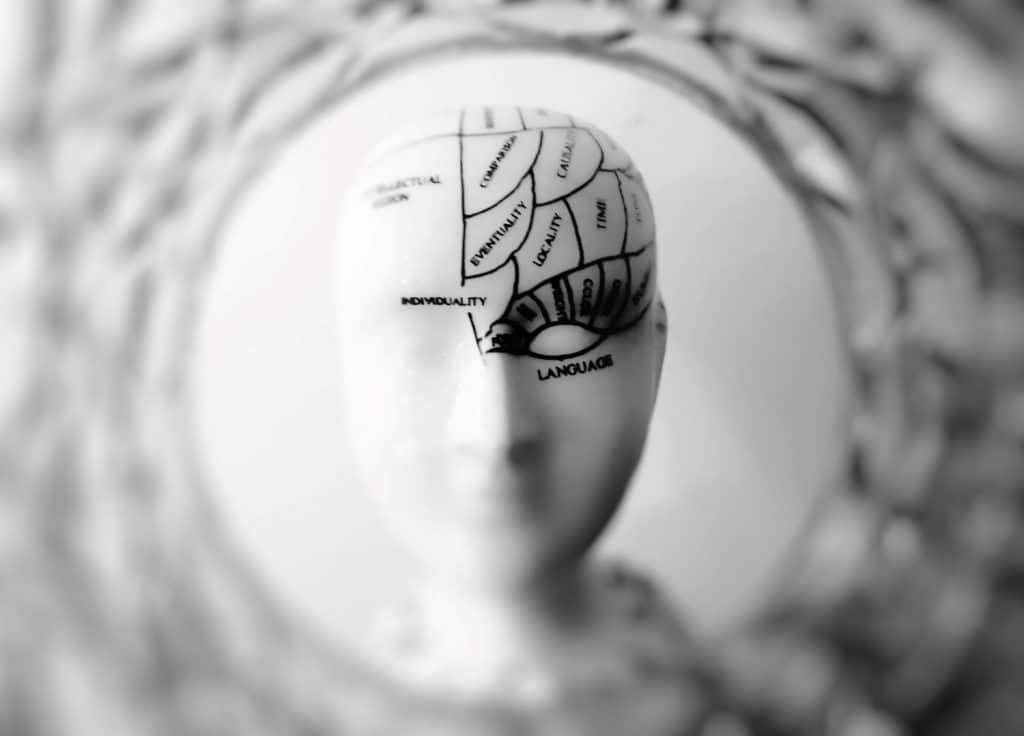
Introduction
Qigong is a powerful mind-body practice that has been used for centuries to promote health and well-being. While physical movements and exercises are an important part of qigong, the practice also places a strong emphasis on the power of the mind. In fact, mindset is a key component of qigong that can help to enhance the effectiveness of the practice and promote greater physical, emotional, and spiritual well-being.
In this blog post, we will explore the power of the mind in qigong and how mindset can improve your practice. We will discuss five key mindset techniques that can help to promote a positive outlook, reduce stress, and enhance the effectiveness of your qigong practice. These techniques include setting intentions, breath awareness, visualization, gratitude, and mindfulness.
Whether you are new to qigong or have been practicing for years, cultivating a positive mindset can help to deepen your practice and promote greater health and well-being. By incorporating these mindset techniques into your qigong practice, you can enhance your overall experience and achieve greater harmony and balance in all aspects of life. So, let’s dive in and explore the power of the mind in qigong.
There are several ways to cultivate a positive mindset in qigong:
- Setting Intentions: Before beginning a qigong practice, it can be helpful to set an intention for the session. This can involve focusing on a specific goal, such as reducing stress or improving overall health and well-being.
- Breath Awareness: Focusing on the breath is a key aspect of qigong. Practitioners are encouraged to breathe slowly, deeply, and with intention, which can help to calm the mind and reduce stress.
- Visualization: Visualization techniques can help to create a positive mindset by imagining the body and mind in a state of balance and harmony. Visualizing the flow of Qi throughout the body can also be helpful in promoting relaxation and healing.
- Gratitude: Expressing gratitude can help to cultivate a positive mindset by focusing on the positive aspects of one’s life. Practitioners can express gratitude for their health, their body, or simply for the opportunity to practice qigong.
- Mindfulness: Practicing mindfulness involves being fully present in the moment and observing one’s thoughts and feelings without judgment. This can help to reduce stress and promote a positive mindset.
Overall, cultivating a positive mindset in qigong involves focusing on the present moment, connecting with the breath, and visualizing the body and mind in a state of balance and harmony. With regular practice, these techniques can help to create a more positive and open mindset, which can enhance the benefits of qigong practice.
Let us look at these ways in a little more detail
Setting an intention:

Setting intentions is a powerful tool for cultivating a positive mindset in qigong. Intention setting involves focusing on a specific goal or outcome for the practice, which helps to direct one’s attention and energy towards that goal. This can be particularly helpful for individuals who are new to qigong or who may be struggling to maintain focus during their practice.
When setting intentions for a qigong practice, it is important to focus on specific, achievable goals. This may involve setting an intention to reduce stress or anxiety, improve physical health and well-being, or cultivate greater inner peace and balance. By focusing on a specific goal, practitioners can bring greater clarity and intention to their practice, which can help to enhance its effectiveness.
Intention setting can be done in a number of ways. Some practitioners may choose to simply state their intention aloud before beginning their practice, while others may write it down or visualize it in their mind. Whatever method is chosen, the key is to focus one’s attention and energy on the intended outcome, and to remain present and focused throughout the practice.
By setting intentions, we can bring greater purpose and meaning to our qigong practice, which can help to cultivate a more positive and open mindset. This, in turn, can enhance the flow of Qi and promote greater healing and well-being. Whether practiced on its own or as part of a larger qigong practice, intention setting is a powerful tool for cultivating a positive mindset and achieving greater balance and harmony in one’s life.
Breath awareness:

Breath awareness is a foundational technique in qigong practice that involves focusing on the breath and using it as a tool for cultivating a positive mindset. This technique is based on the idea that the breath is intimately connected to the body’s Qi, and that by controlling the breath, one can regulate the flow of Qi and promote greater physical and emotional health.
In qigong, we are encouraged to breathe slowly, deeply, and with intention. This involves breathing in through the nose, filling the lungs completely, and then exhaling slowly through the mouth. By focusing on the breath in this way, we can calm the mind and reduce stress, which can help to promote greater relaxation and inner peace. This focus can be on the physical movement of the chest, the expansion and contraction of your abdomen or the sensation of the breath itself at the nostrils and/or in the throat.
Breath awareness can be practiced on its own, or as part of a larger qigong practice. It can be particularly helpful for individuals who are new to qigong, or who may be struggling to stay focused during their practice. By bringing their attention to the breath, we can cultivate greater awareness and mindfulness, which can help to deepen our practice and enhance its effectiveness.
Breath awareness is also a useful technique for managing stress and anxiety in everyday life. By learning to breathe deeply and intentionally, individuals can promote greater relaxation and reduce the physiological symptoms of stress, such as increased heart rate and shallow breathing. This can help to promote greater physical and emotional well-being, and support overall health and vitality.
Overall, breath awareness is a powerful tool for cultivating a positive mindset in qigong. By focusing on the breath and using it as a tool for relaxation and stress reduction, practitioners can promote greater inner awareness and balance, and enhance the flow of Qi throughout the body.
More on correct breathing for Qigong can be found in this previous blog post: The Importance of Breathing Correctly
Using Visualization:

Visualization is a powerful tool in qigong practice that involves creating mental images to promote relaxation, balance, and healing. Visualization techniques are based on the idea that the mind and body are intimately connected, and that by imagining the body in a state of balance and harmony, one can promote greater physical and emotional health.
In qigong, we are sometimes encouraged to use visualization techniques to promote relaxation and healing. This may involve imagining the body and mind in a state of deep relaxation and peace, or visualizing the flow of Qi throughout the body. By creating these mental images, we can cultivate a positive mindset and promote greater well-being.
One common visualization technique in qigong involves imagining the body in a state of balance and harmony. This may involve visualizing a beam of light or energy flowing through the body, connecting all of its parts and promoting a sense of wholeness and unity. By focusing on this image, we can promote greater relaxation and reduce stress, which can help to enhance the flow of Qi throughout the body.
Visualizing the flow of Qi throughout the body is another powerful technique in qigong. This may involve imagining the breath flowing in and out of the body, or visualizing the movement of energy through the body’s meridians. By focusing on these images, we can promote greater awareness of the body’s Qi, and enhance its flow to promote healing and well-being.
Visualization can be practiced on its own or as part of a larger qigong practice. It can be particularly helpful for individuals who may be struggling with stress, anxiety, or other emotional issues, as it can promote greater relaxation and a sense of inner peace. By cultivating a positive mindset through visualization, we can enhance the effectiveness of our qigong practice, and promote greater health and vitality.
Gratitude:

Gratitude is an important aspect of qigong practice that involves focusing on the positive aspects of one’s life and expressing appreciation for them. It cab be helpful to cultivate a sense of gratitude as part of their qigong practice, as this can help to promote a positive mindset and enhance the effectiveness of their practice.
Expressing gratitude can take many forms in qigong practice. Some practitioners may choose to express gratitude for their health, their body, or simply for the opportunity to practice qigong. Others may express gratitude for the people in their lives, or for the beauty of the natural world around them. Whatever the focus of the gratitude practice, the goal is to cultivate a sense of appreciation and positivity in one’s life.
Gratitude is an important aspect of a positive mindset, as it helps to shift the focus away from negative thoughts and emotions, and towards positive ones. By expressing gratitude, we can cultivate a sense of joy and contentment, which can help to promote greater emotional well-being and reduce stress and anxiety.
In qigong, gratitude can be practiced in a number of ways. Some practitioners may choose to begin their practice by expressing gratitude for the opportunity to practice and for the benefits that it provides. Others may choose to incorporate gratitude into their practice by focusing on the positive aspects of their body and health, or by expressing gratitude for the people in their lives.
Thus gratitude can be a powerful tool for cultivating a positive mindset in qigong. By focusing on the positive aspects of one’s life and expressing appreciation for them, we can certainly promote greater emotional well-being and enhance the effectiveness of their practice. Whether expressed through words, thoughts, or actions, gratitude it can be an essential component of qigong practice and an important tool for promoting overall health and vitality.
Mindfulness:

Mindfulness is a key component of qigong practice that involves being fully present in the moment and observing one’s thoughts and feelings without judgment. It is the practice of bringing one’s attention to the present moment, with a curious and non-judgmental attitude. Mindfulness can be practiced both on and off the qigong mat and has been shown to have a variety of health benefits, including reducing stress and promoting a positive mindset.
In qigong practice, mindfulness involves being fully present and attentive to the movements of the body, the breath, and the flow of Qi. By focusing on these sensations without judgment, practitioners can develop a deeper sense of awareness and connection to their bodies, which can promote relaxation and reduce stress. Mindfulness can also help to promote a positive mindset by encouraging practitioners to focus on the present moment, rather than dwelling on negative thoughts or worries.
One of the key benefits of mindfulness in qigong is its ability to reduce stress. By bringing one’s attention to the present moment and observing one’s thoughts and feelings without judgment, we can develop a sense of calm and inner peace. This can be particularly helpful for individuals who may be struggling with stress, anxiety, or other emotional issues, as it can help to promote a greater sense of emotional well-being.
In addition to reducing stress, mindfulness can also help to promote a positive mindset by encouraging us to focus on the positive aspects of our practice and their lives. By observing one’s thoughts and feelings without judgment, we can cultivate a sense of curiosity and openness, which can help to promote a greater sense of joy and contentment in their lives.
Overall, mindfulness is an essential component of qigong practice, helping to promote relaxation, reduce stress, and cultivate a positive mindset. By being fully present in the moment and observing one’s thoughts and feelings without judgment, we can develop a deeper sense of awareness and connection to our bodies, which can enhance the effectiveness of their qigong practice and promote greater health and well-being.
Conclusion:
In conclusion, qigong is a powerful mind-body practice that can help to promote physical, emotional, and spiritual well-being. By incorporating these five mindset techniques – setting intentions, breath awareness, visualization, gratitude, and mindfulness – we can enhance the effectiveness of our qigong practice and promote a positive mindset.
Setting intentions can help to focus the mind and create a sense of purpose in one’s practice. Breath awareness can help to calm the mind and reduce stress, while visualization can promote relaxation and healing. Expressing gratitude can help to cultivate a positive mindset by focusing on the positive aspects of one’s life, and mindfulness can help to promote relaxation, reduce stress, and enhance the effectiveness of the practice.
Some of these techniques will already be being practiced by default as part of your qigong; such as focus on the breath and movement of your body-mindfulness. Many of these techniques can be employed when in quiet standing prior to commencing your qigong routine. It is a valuable practice to stand quietly, consciously relax the muscles in your body and the mind, for five minutes prior to commencing movement. This is the time to introduce these techniques. Pick one or two initially and make them a regular part of your practice.
By incorporating these mindset techniques into your qigong practice, you will promote greater physical and emotional well-being, reduce stress and anxiety, and cultivate a more positive and joyful outlook on life. Whether practiced alone or in a group setting, qigong offers a powerful and accessible way to enhance overall health and vitality, and to promote greater harmony and balance in all aspects of life.
This post is also available on the JinLi-Wushu Tai Chi School blog: https://www.jinli.com.au/blog/the-power-of-the-mind-in-qigong-how-mindset-can-improve-your-practice
Yours in Qigong and Taijiquan
Sifu Peter